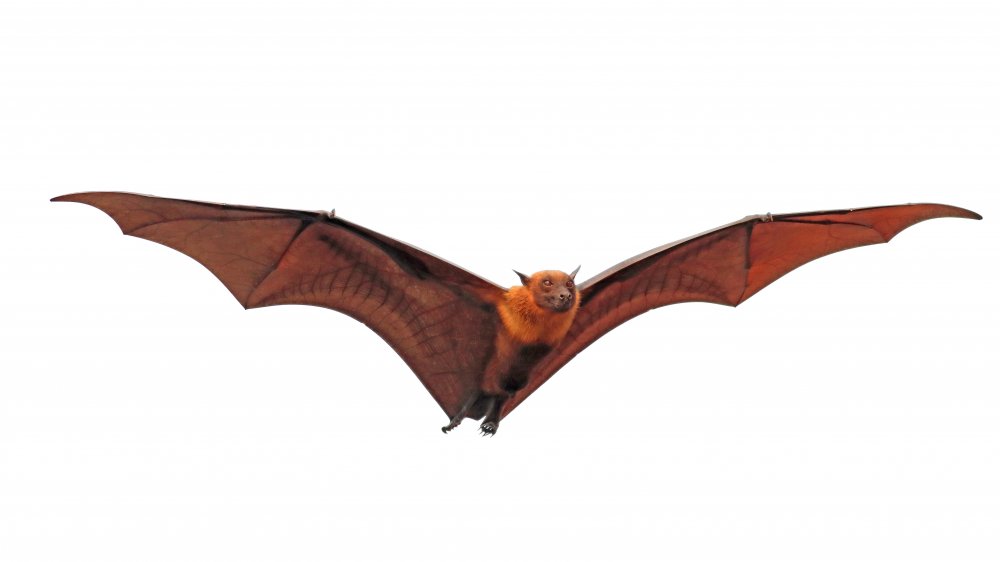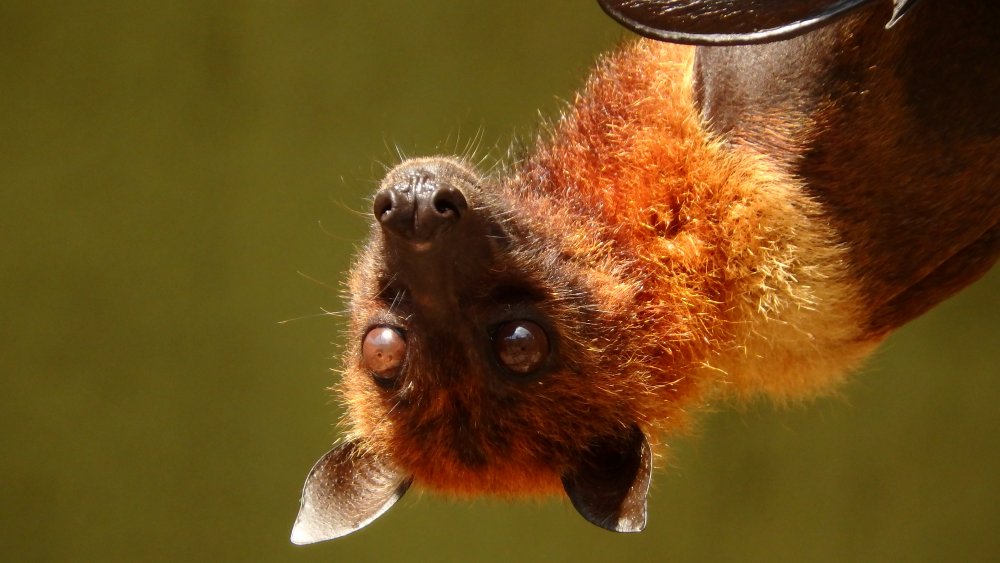The Largest Bat Species In The World
In his autobiography, Mark Twain wrote, "A bat is beautifully soft and silky; I do not know any creature that is pleasanter to the touch or is more grateful for caressings, if offered in the right spirit. I know all about these coleoptera, because our great cave, three miles below Hannibal (Missouri), was multitudinously stocked with them, and often I brought them home to amuse my mother with." Like Queen Victoria, his mother was not amused. Bats can carry a number of viruses that are less than friendly to human beings, including rabies, so young Sam Clemens, as he was known then, dodged himself a bullet.
One of the wondrous aspects of bats is the fact that they radically vary in size from species to species. The Chinese horseshoe bat, believed by some to be the originator of the particular brand of coronavirus we're all avoiding these days, weighs less than an ounce and has a wingspan of up to three inches. That's not the smallest of the bunch; that honor goes to the bumblebee bat, according to Mother Nature Network. Based on skull size, it's the world's smallest mammal, weighing just two grams and easily mistaken for, say, an actual bumblebee. It's found in western Thailand and southeast Myanmar.
Pointed ears, but not Vulcan
The bat you're most likely to encounter in this great land of ours is the little brown bat, with a range stretching from Alaska to Mexico, and then all across North America. It isn't particularly big, but there's a lot of them. So the question naturally arises: What's the biggest bat?
As explained by Worldatlas.com and others, the honors belong to what's sometimes referred to as the flying fox, which has nothing to do with personal attractiveness (except, perhaps, to another flying fox) and everything to do with size and shape. The flying fox, part of the group referred to as "megabat," is native to the coastal tropical rain forests of southeast Asia, predominantly in southern Myanmar, Thailand, Vietnam, the Philippines, and the Malaysian Peninsula, as well as parts of Australia and Africa. Even though their scientific name is Pteropus vampyrus, they aren't going to ruin your vacation — they mostly subsist on fruit, with papaya as a personal favorite. As for actual size: full wingspan can measure up to five feet, and they can top two pounds in weight. And they really do kind of look like a fox — they have large eyes and uniquely pointed ears. Which is probably pretty foxy. To another bat.

